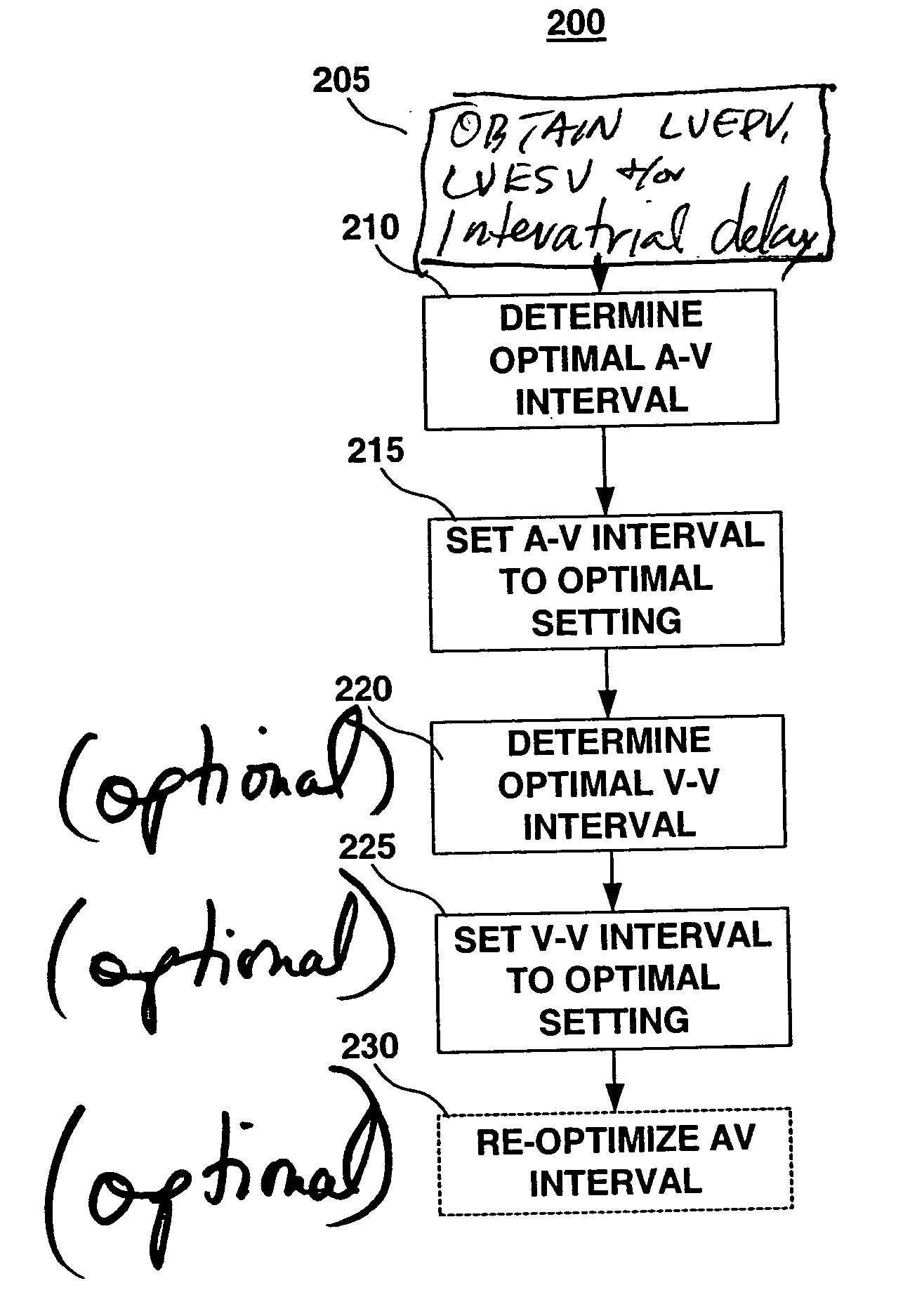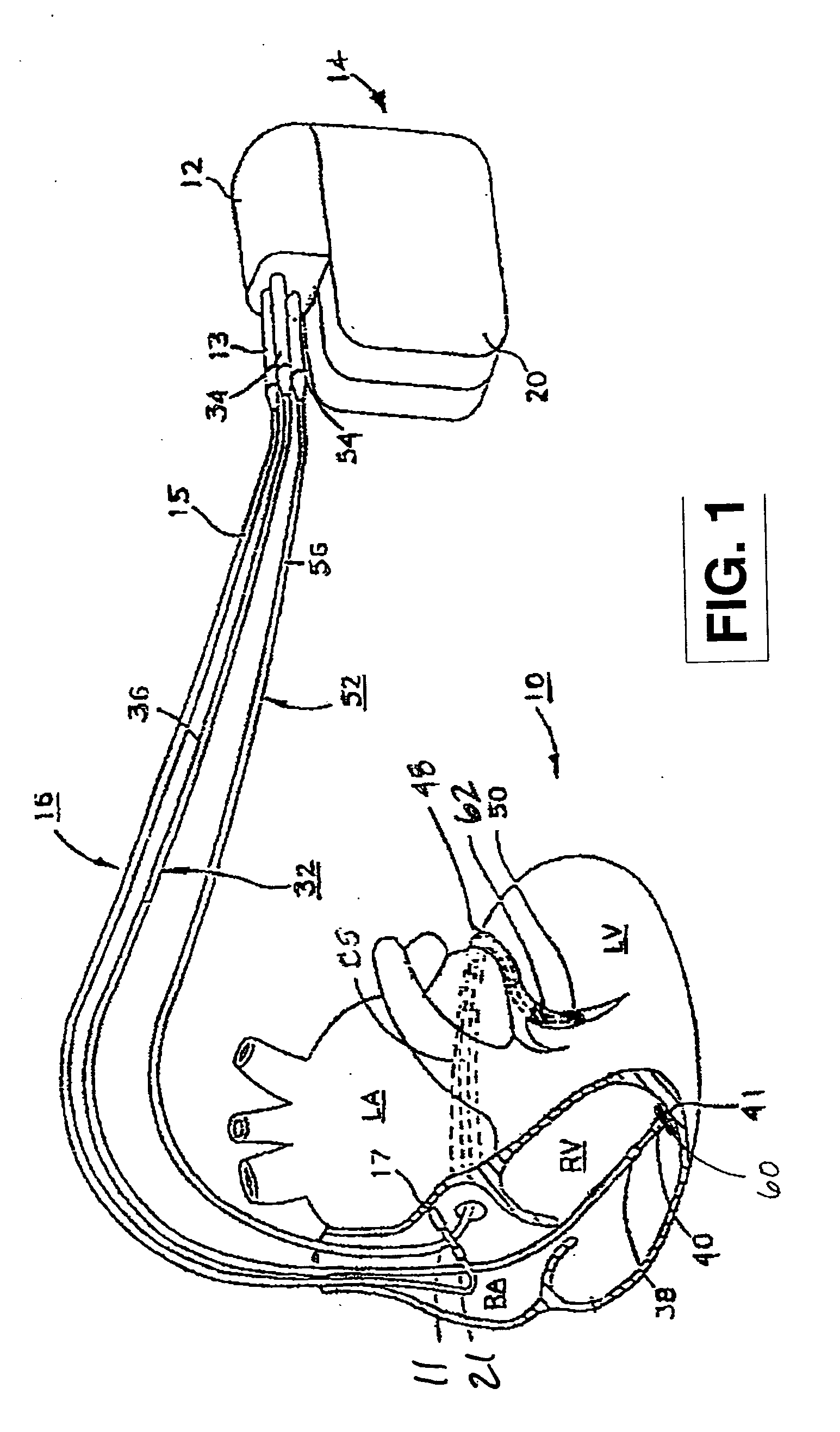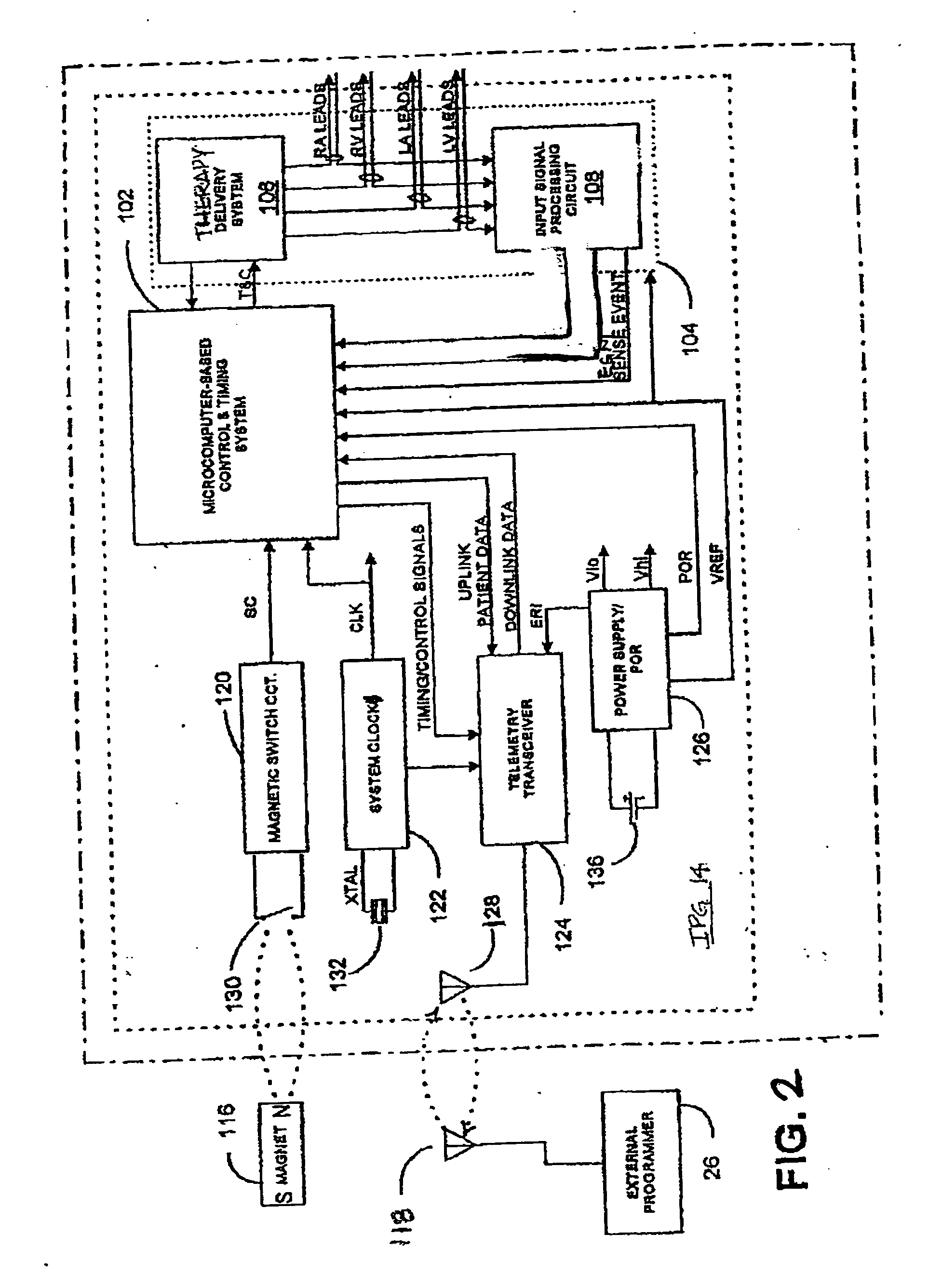Method and apparatus for determining an efficacious atrioventricular delay interval
- Summary
- Abstract
- Description
- Claims
- Application Information
AI Technical Summary
Benefits of technology
Problems solved by technology
Method used
Image
Examples
Embodiment Construction
[0023] As indicated above, the present invention is directed toward providing a method and apparatus for optimizing ventricular function and selecting cardiac pacing intervals for the purposes of restoring ventricular synchrony based on inter- and / or intra-atrial delay, ventricular filling characteristics and / or physiologic dimensions of one or both ventricles. The present invention is useful in optimizing atrial-ventricular, inter-atrial and inter-ventricular pacing intervals during cardiac resynchronization therapy (CRT) used for treating heart failure. The present invention is also useful in selecting pacing parameters used during temporary pacing applied for treating post-operative uncoordinated cardiac chamber (e.g., atrial and / or ventricular) motion. As such, the present invention may be embodied in an implantable cardiac pacing system including a dual chamber or multichamber pacemaker and associated set of medical electrical leads. Alternatively, the present invention may be ...
PUM
 Login to View More
Login to View More Abstract
Description
Claims
Application Information
 Login to View More
Login to View More - R&D
- Intellectual Property
- Life Sciences
- Materials
- Tech Scout
- Unparalleled Data Quality
- Higher Quality Content
- 60% Fewer Hallucinations
Browse by: Latest US Patents, China's latest patents, Technical Efficacy Thesaurus, Application Domain, Technology Topic, Popular Technical Reports.
© 2025 PatSnap. All rights reserved.Legal|Privacy policy|Modern Slavery Act Transparency Statement|Sitemap|About US| Contact US: help@patsnap.com



